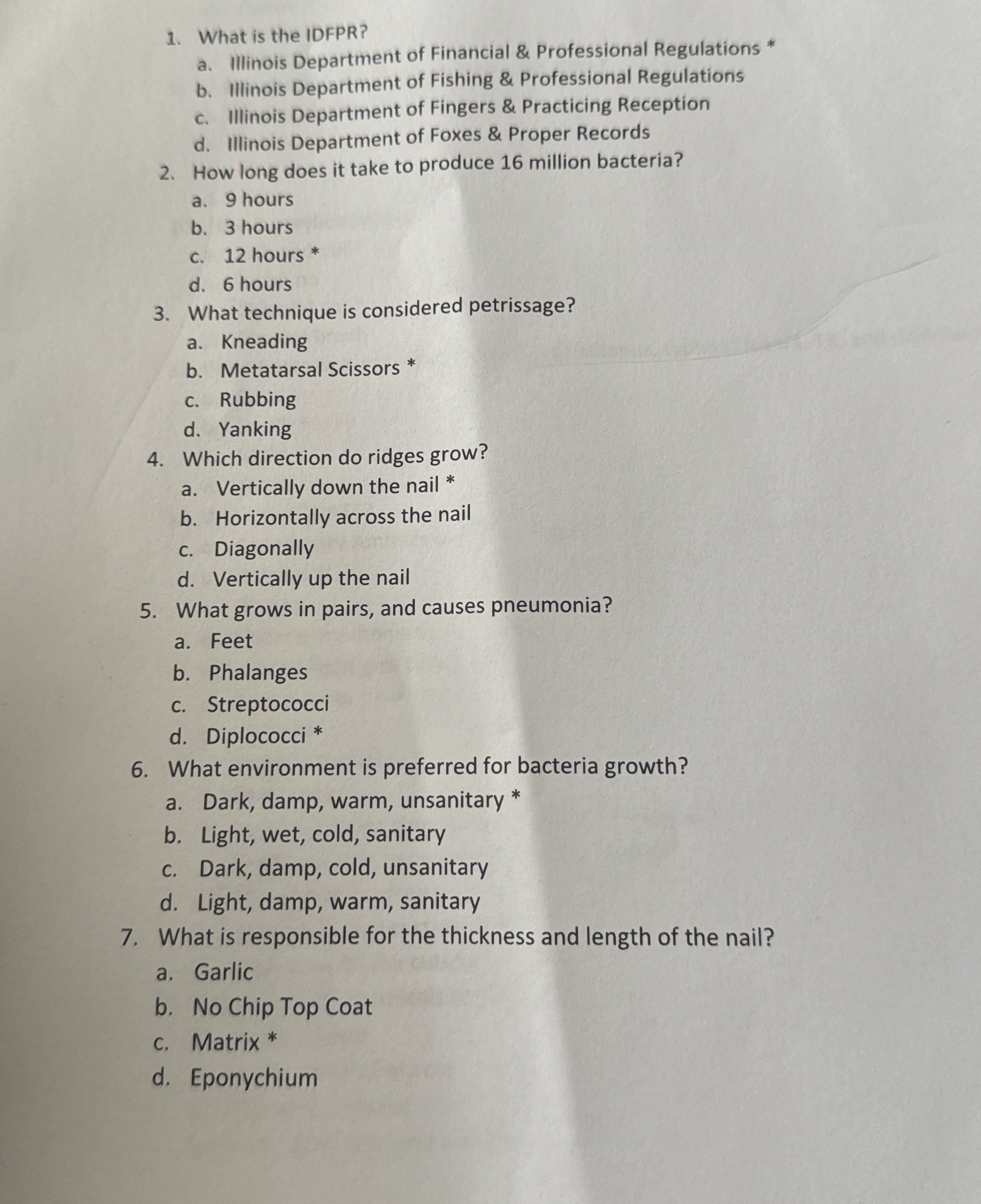What is the IDFPR? How long does it take to produce 16 million bacteria? What technique is considered petrissage? Which direction do ridges grow? What grows in pairs, and causes pn... What is the IDFPR? How long does it take to produce 16 million bacteria? What technique is considered petrissage? Which direction do ridges grow? What grows in pairs, and causes pneumonia? What environment is preferred for bacteria growth? What is responsible for the thickness and length of the nail?

Understand the Problem
The question is asking for information about the IDFPR and bacterial growth along with various techniques and biological terms related to nails and pneumonia. This indicates a focus on health and biological science knowledge.
Answer
IDFPR regulates professionals. 6 hours for bacteria. Petrissage: kneading. Ridges: vertical down. Pneumonia: diplococci. Bacteria: dark, damp, warm. Matrix: nail growth.
The IDFPR is the Illinois Department of Financial & Professional Regulations. It takes about 6 hours to produce 16 million bacteria. Petrissage is considered kneading. Ridges grow vertically down the nail. Diplococci grow in pairs and cause pneumonia. Bacteria prefer a dark, damp, warm, unsanitary environment. The matrix is responsible for the thickness and length of the nail.
Answer for screen readers
The IDFPR is the Illinois Department of Financial & Professional Regulations. It takes about 6 hours to produce 16 million bacteria. Petrissage is considered kneading. Ridges grow vertically down the nail. Diplococci grow in pairs and cause pneumonia. Bacteria prefer a dark, damp, warm, unsanitary environment. The matrix is responsible for the thickness and length of the nail.
More Information
The matrix, located beneath the base of the nail, controls nail growth by producing new nail cells. Diplococci bacteria can survive in encrusted conditions, leading to infections when inhaled.
Tips
Ensure understanding of bacterial growth conditions and anatomy of the nail for proper answers.
Sources
- Growth and Laboratory Maintenance of Pseudomonas aeruginosa - pmc.ncbi.nlm.nih.gov
- Chapter 5: Infection Control Principles and Practices - resources.finalsite.net
AI-generated content may contain errors. Please verify critical information